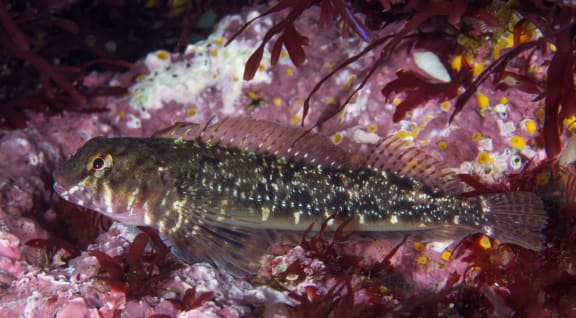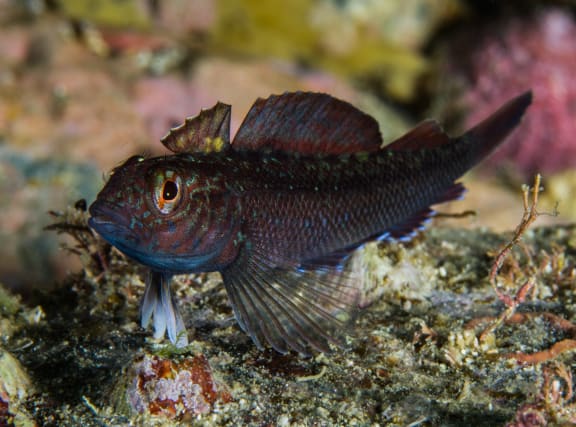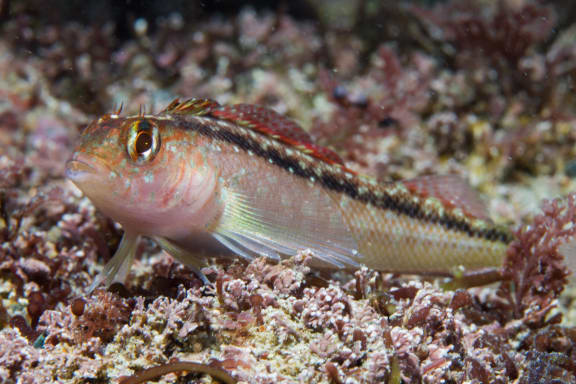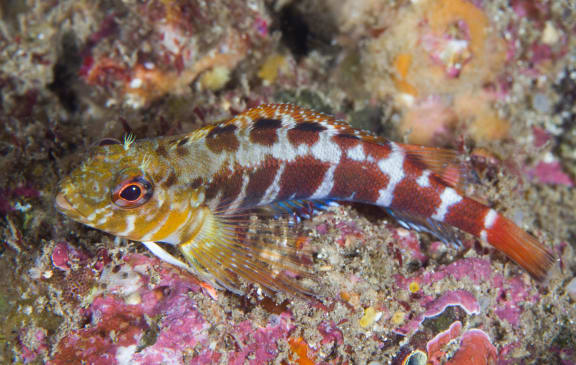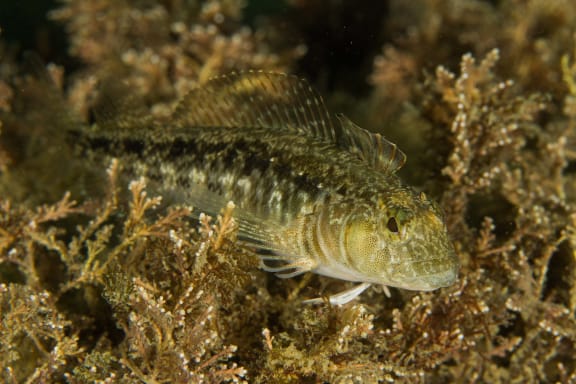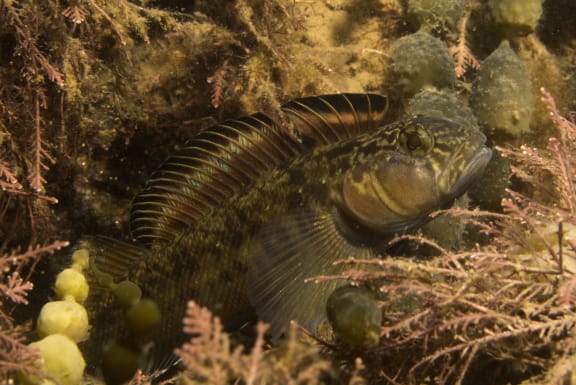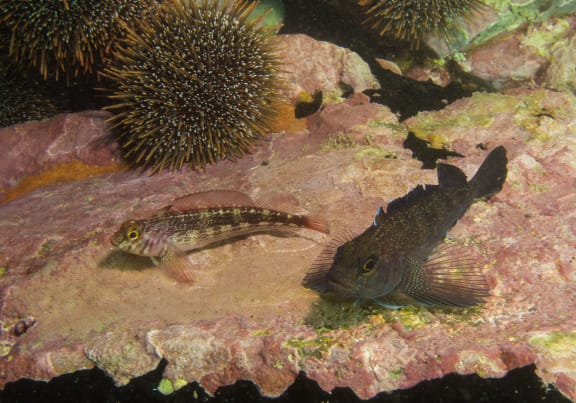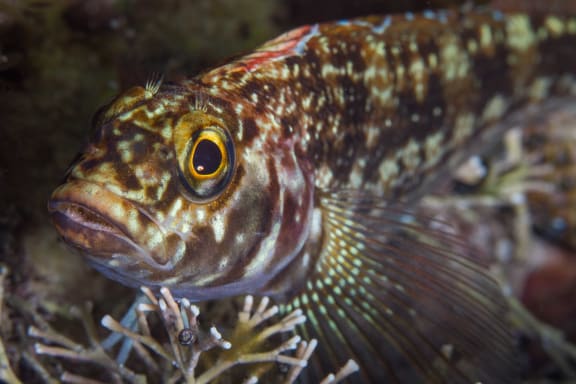By Alison Ballance
“The changes on a daily basis are absolutely astounding. During the day, temperatures in these rock pools can rocket up to 30° Celsius, whereas normal sea temperatures in the summer are around 21° or 22°. If the rock pools are exposed at night then oxygen levels can plummet to virtually nothing.”
Neill Herbert, University of Auckland
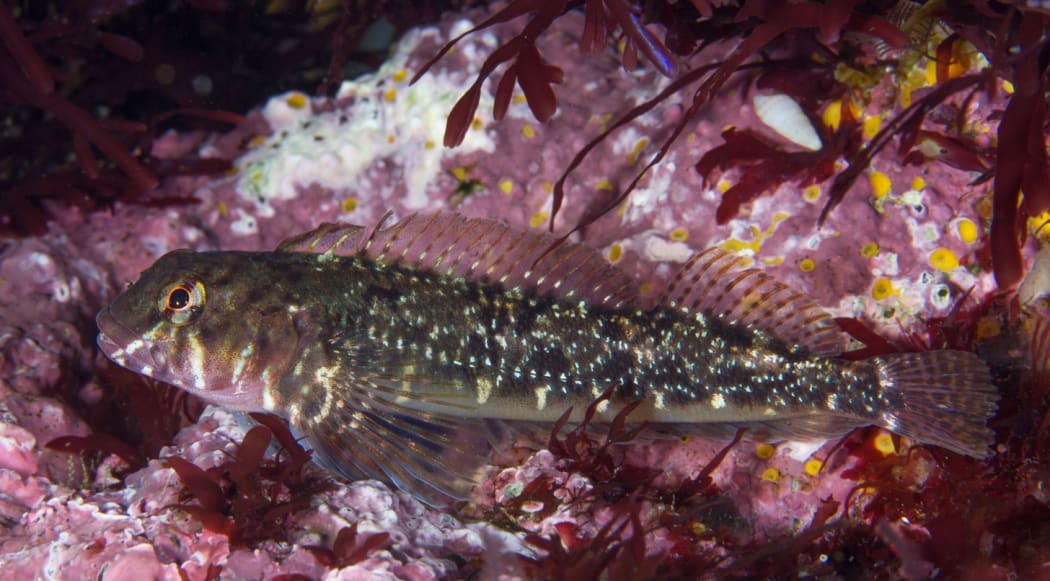
The stand-out performer for tolerating low oxygen or hypoxic conditions in the highest rock pools is the the triplefin called the twister. Photo: Paul Caiger
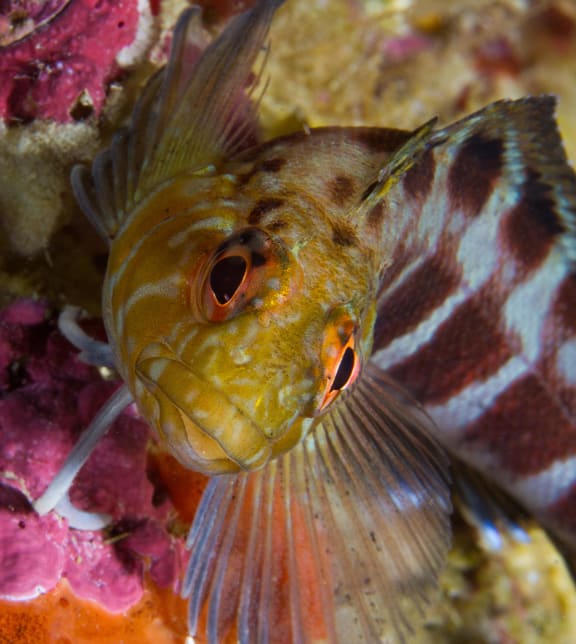
The mottled triplefin is usually found in the subtidal at depths of around 10 metres, and it is not tolerant of the low oxygen conditions found in rock pools. Photo: Paul Caiger
Marine biologists are studying how small fish, known as triplefins, survive low oxygen levels in rock pools. They hope it will provide physiological insights into how human brains cope when starved of oxygen following a stroke or other hypoxic damage. “What can we learn from these fish in order to help prevent hypoxic brain death?” asks Neill.
Neill Herbert and PhD student Tristan McArley from the Institute of Marine Science at the University of Auckland are studying the triplefins at the Leigh Marine Laboratory. The work is part of a collaborative Marsden-funded project into hypoxic brain damage being carried out with Anthony Hickey and Nigel Birch from the School of Biological Sciences and Gillian Renshaw of Griffith University in Australia. “We’re … doing the preliminary work to establish from a whole animal perspective how tough these fish are” says Neill. “My colleagues are looking at the cellular mechanisms and what we might learn from these species that we can adapt [to humans].”
Rock pools are extreme environments. On a sunny day, a rock pool at the top of the shore might be exposed for more than six hours before it is flushed by the incoming tide, and in summer temperatures can quickly climb by eight or more degrees.
At night, oxygen levels in the rock pool drop because “basically everything, including all the algae, is respiring and using up the oxygen” says Tristan.
“So it tends to be the rock pools with lots of algae where oxygen drops really low at night.”
“Effectively these fish are just sat in stagnant water, so it’s a tough environment,” says Neill. “Bear in mind that fish are ectothermic, so at higher temperatures their metabolic rate goes up and they’re churning through oxygen at a faster rate.” This double whammy is of interest as climate change predictions are that water temperatures will go up so the fish will be facing an even greater challenge than they do today.
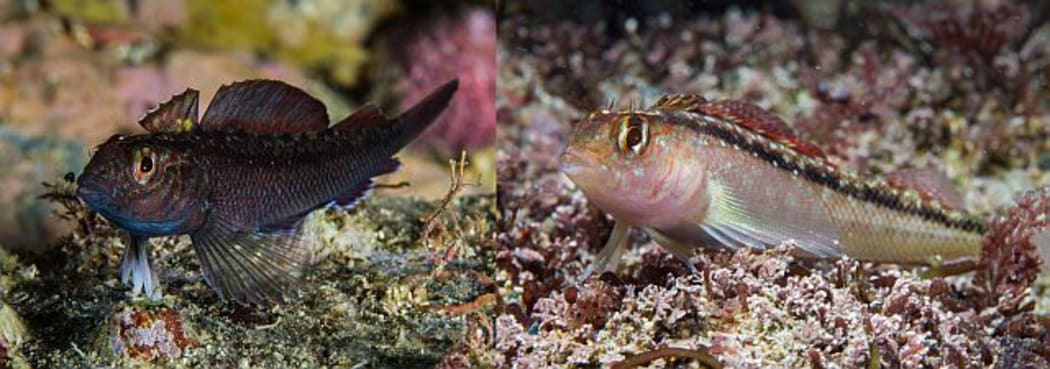
The common triplefins pictured here are found in the intertidal and high subtidal, and they are relatively tolerant of low oxygen conditions in rock pools. Photo: Paul Caiger
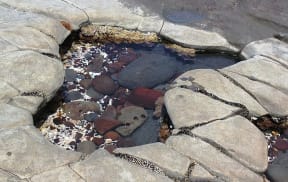
While small rock pools like this might be home to just a few species, larger rock pools may be filled with algae and fish, and their temperature and oxygen levels can change wildly during the day. Photo: CC SA 3.0
Although conditions in the rock pools become hypoxic – low in oxygen – at night, the opposite can happen during the day, with the water becoming hyperoxic. “The water is becoming supersaturated with oxygen, above a hundred per cent saturation,” says Tristan “I’ve measured as high as 220 per cent oxygen saturation. And that’s a result of photosynthetic organisms such as algae and plankton photosynthesising and releasing oxygen.” Although not part of their current project Neill says it’s an interesting question as to how the fish cope in hyperoxic conditions as high oxygen levels are considered toxic. And, as well, the fish may have to cope with both extreme hyperoxia and hypoxia within a single day.
Tristan has been putting individual triplefins in small sealed tanks and measuring their physiological responses to different oxygen levels at different temperatures. So far he has measured oxygen consumption using a respirometer, which is an indirect way of measuring metabolic rate. The next stage will involve using a whole body calorimeter to measure the fish metabolism directly. He is comparing five different species – the twister (Bellapiscis medius), the common triplefin (Forsterygion lapillum) and the estuarine triplefin (F. nigripenne) are inter-tidal specialists, while the striped triplefin (F. varium) and mottled triplefin (F. malcolmi) are subtidal species that are usually found between 5-20 metres deep.
Not surprisingly, the inter-tidal species cope much better with low oxygen.
In terms of their ability to survive low oxygen, Neill says that “the Bellapiscis species would be the equivalent of the mountaineering athletes that are climbing Everest … except our fish are doing it without a supplementary oxygen tank.”
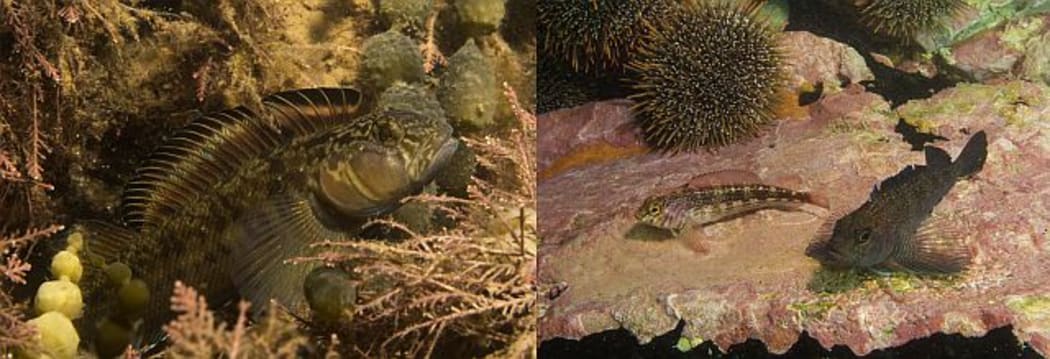
The estuarine triplefin (left) is a male, while the pair of striped triplefins (right) are guarding a nest. Photo: Paul Caiger
Mike Hamlin’s work on training human athletes in hypoxic conditions has previously featured on Our Changing World.
The 2014 Marsden Fund project that this work is part of was awarded in 2014 and is called 'How to avoid brain damage during oxygen deprivation? Intertidal fish provide a unique test model'.
Check out the gallery of triplefin photos (below) from Paul Caiger. Paul is a PhD student at the University of Auckland's Leigh Marine Laboratory, and he is studying triplefins. You can see more of his great photos on Flickr. New Zealand is a centre of diversity for triplefins, with 26 endemic species that are the most abundant of New Zealand’s shallow-water subtidal reef fish.
Listen here to the audio:
